 W
WThis is a list of games for the Bandai WonderSwan Color handheld video game system, organized alphabetically by name. See also the List of WonderSwan games, which work on the WonderSwan Color. See Lists of video games for related lists.
 W
WArc the Lad is a series of tactical role-playing games created by Toshiro Tsuchida and published by Sony Interactive Entertainment. Each Arc the Lad game often features recurring characters and locations, as well as a consistent timeline. Most of the stories in the series involves a cast of characters battling against the forces of an evil organization or empire, with monsters attacking the world alongside them. The series features a similar strategy-like battle system, which all games except Arc the Lad: End of Darkness, follow.
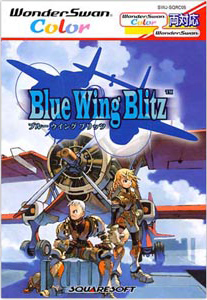 W
WBlue Wing Blitz (ブルーウィングブリッツ) is a Japanese-exclusive tactical role-playing game developed and published by Square on July 5, 2001 for the WonderSwan Color and compatible with the WonderSwan.
 W
WDigimon Battle Spirit is a fighting video game originally published by Bandai and developed by Dimps for the Japanese-only WonderSwan Color handheld system under the name Digimon Tamers: Battle Spirit . It was later ported to Nintendo's Game Boy Advance for international releases in North America and Europe two years later.
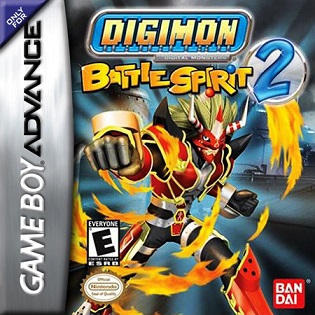 W
WDigimon Battle Spirit 2 is a fighting video game released for WonderSwan Color in 2002 and Game Boy Advance in 2004. It was developed by Dimps and published by Bandai based on the fourth season of the Digimon anime, Digimon Frontier. It was originally released in Japan for the WonderSwan Color handheld in December 2002 with the title Battle Spirit: Digimon Frontier . It was later ported to the Game Boy Advance for the Western market, released in North America in September 2003, and Europe in August 2004.
 W
WDigimon Tamers: Battle Spirit Ver. 1.5 is a fighting game developed and published by Bandai and released exclusively in Japan for the WonderSwan Color handheld console. It is an expansion to Digimon Tamers: Battle Spirit and contains many new features and characters. Unlike its predecessor or sequel, Digimon Battle Spirit 2, this game did not receive a Game Boy Advance port.
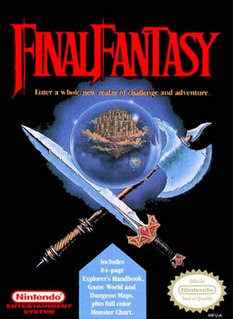 W
WFinal Fantasy is a fantasy role-playing video game developed and published by Square in 1987. It is the first game in Square's Final Fantasy series, created by Hironobu Sakaguchi. Originally released for the NES, Final Fantasy was remade for several video game consoles and is frequently packaged with Final Fantasy II in video game collections. The first Final Fantasy story follows four youths called the Light Warriors, who each carry one of their world's four elemental crystals which have been darkened by the four Elemental Fiends. Together, they quest to defeat these evil forces, restore light to the crystals, and save their world.
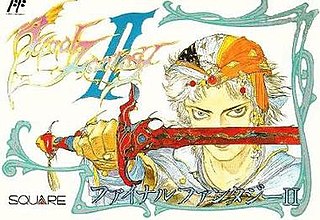 W
WFinal Fantasy II is a fantasy role-playing video game developed and published by Square in 1988 for the Family Computer as the second installment of the Final Fantasy series. The game has received numerous enhanced remakes for the WonderSwan Color, the PlayStation, the Game Boy Advance, the PlayStation Portable, PC and multiple mobile and smartphone types. As neither this game nor Final Fantasy III were initially released outside Japan, Final Fantasy IV was originally released in North America as Final Fantasy II, so as not to confuse players. Following enhanced versions for iOS and Android in 2010 and 2012 respectively, the game was rereleased again as part of the 2021 Final Fantasy Pixel Remaster series.
 W
WFinal Fantasy IV, known as Final Fantasy II for its initial North American release, is a role-playing video game developed and published by Square for the Super Nintendo Entertainment System. Released in 1991, it is the fourth main installment of the Final Fantasy series. The game's story follows Cecil, a dark knight, as he tries to prevent the sorcerer Golbez from seizing powerful crystals and destroying the world. He is joined on this quest by a frequently changing group of allies. Final Fantasy IV introduced innovations that became staples of the Final Fantasy series and role-playing games in general. Its "Active Time Battle" system was used in five subsequent Final Fantasy games, and unlike prior games in the series, IV gave each character their own unchangeable character class.
 W
WThe Final Fantasy Legend, known in Japan as Makai Toushi SaGa, is a video game released for the Game Boy in December 1989 by Square Co. It is the first game in the SaGa series and the first role-playing video game for the system. Square translated the game into English for worldwide release and renamed it, linking it with the Final Fantasy series to improve marketing. Sunsoft re-released it in North America during 1998; Square followed with a Japan-exclusive remake released for the WonderSwan Color and mobile phones in 2002 and 2007 respectively, and later for the Nintendo Switch worldwide in 2020.
 W
WFront Mission is a tactical role-playing game developed by G-Craft and published by Squaresoft, and was released in Japan on February 24, 1995 for the Super Famicom. Front Mission is the first main entry and the first entry overall in the Front Mission series. Front Mission is part of a serialized storyline that follows the stories of various characters and their struggles involving mecha known as wanzers. A direct port of the game was released for the WonderSwan Color in Japan on July 12, 2002.
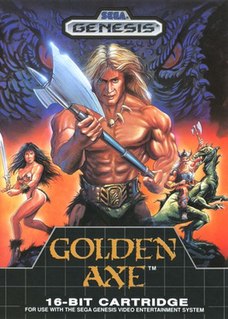 W
WGolden Axe is a side-scrolling hack-and-slash video game released by Sega for arcades in 1989, running on the Sega System 16-B arcade hardware. Makoto Uchida was the lead designer of the game, and was also responsible for the creation of the previous year's Altered Beast. The game casts players as one of three warriors who must free the fantastical land of Yuria from the tyrannical rule of Death Adder, who wields the titular Golden Axe.
 W
WGunpey , often written as Gun Pey or GunPey, is a series of handheld puzzle games released by Bandai. It was originally released for the WonderSwan, and has been ported to WonderSwan Color, PlayStation, Nintendo DS and PlayStation Portable. The game was named as a tribute to the developer of the game, Gunpei Yokoi. He is known for developing several handheld consoles such as Nintendo's Game Boy, Virtual Boy, and Bandai's Wonderswan system. In the series, players move line fragments vertically in a grid in order to make a single branching line connect horizontally from one end to the other. The objective of the game differs by what game mode players choose.
 W
WJudgement Silversword is a vertical-scrolling shooter video game developed and published for the WonderSwan Color by Qute.
 W
WMega Man Battle Chip Challenge, known in Japan as Rockman EXE Battle Chip GP , is a video game developed by Inti Creates and published by Capcom for the Game Boy Advance (GBA) handheld game console. It is a spin-off title in the Mega Man Battle Network series. The game saw a simultaneous August 8, 2003 release in Japan on the WonderSwan Color and Swan Crystal titled Rockman EXE N1 Battle . The GBA version was localized in North America and Europe the following March. The European version featured a completely different logo, which was also used on Mega Man X7, Mega Man X8, Mega Man X: Command Mission, Mega Man Zero 2, Mega Man Zero 3, Mega Man Zero 4, Mega Man Network Transmission, Mega Man Battle Network 3, Mega Man Battle Network 4, and Mega Man Battle Network 5. It was released on the Wii U's Virtual Console on July 30, 2014 in Japan, with both the North American and PAL region release occurring in August 2014.
 W
WNamco Super Wars (ナムコスーパーウォーズ) is a tactical role-playing game developed by Namco and published by Bandai for the Wonderswan Color. It is a crossover game, featuring characters from several classic Namco titles.
 W
WRhyme Rider Kerorican (ライムライダー・ケロリカン) is a music video game released in 2000 for the WonderSwan Color. Although being developed by NanaOn-Sha, it was released exclusively in Japan.
 W
WRiviera: The Promised Land is a role-playing video game originally produced in 2002 by Sting Entertainment for WonderSwan Color as the first episode of the Dept. Heaven series of games. The game was later introduced to Nintendo's Game Boy Advance in 2004, which Atlus USA released in North America in 2005. An enhanced remake was released for the PlayStation Portable in November 2006, and was released in July 2007 in North America by Atlus USA.
 W
WRockman EXE WS is a platform video game, part of the Mega Man Battle Network subseries of Mega Man video games. The game was released on the WonderSwan Color, only in Japan. This game is a platformer like Mega Man Network Transmission, rather than a role-playing game.
 W
WRomancing SaGa is a 1992 role-playing video game developed and published by Square for the Super Famicom. It is the fourth entry in the SaGa series. It was subsequently released for the WonderSwan Color in 2001 and mobile phones in 2009. A remake for the PlayStation 2, subtitled Minstrel Song in Japan, was released in both Japan and North America in 2005 by Square Enix. The storyline follows eight different protagonists on quests through the world of Mardias, all culminating in a fight against the dark god Saruin. Gameplay features nonlinear exploration of the game world, with the turn-based battles featuring group formations. As with other SaGa titles, there are no experience points and character attributes and skills are dependent on actions taken in battle.
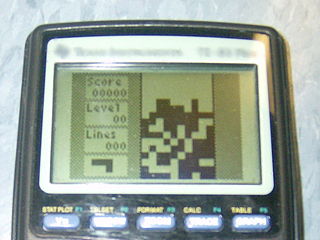 W
WThis is a list of variants of the game Tetris. It includes officially licensed Tetris sequels, as well as unofficial clones.
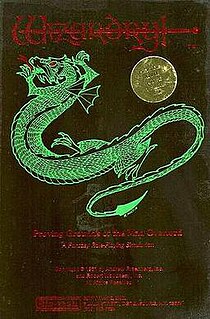 W
WWizardry: Proving Grounds of the Mad Overlord is the first game in the Wizardry series of role-playing video games. It was developed by Andrew Greenberg and Robert Woodhead. In 1980, Norman Sirotek formed Sir-Tech Software, Inc. and launched a beta version of the product at the 1980 Boston Computer Convention. The final version of the game was released in 1981.
 W
WX, also known as X/1999, is a Japanese manga series created by Clamp, a creative team made up of Satsuki Igarashi, Nanase Ohkawa, Tsubaki Nekoi, and Mokona. It premiered in Kadokawa Shoten's Monthly Asuka shōjo manga magazine in May 1992 and ran there until it went on hiatus in March 2003; it has yet to be concluded. The story takes place at the end of days in the year 1999. The series follows Kamui Shiro, a young esper who returns home to Tokyo after a six-year absence to face his destiny as the one who will determine humanity's fate.